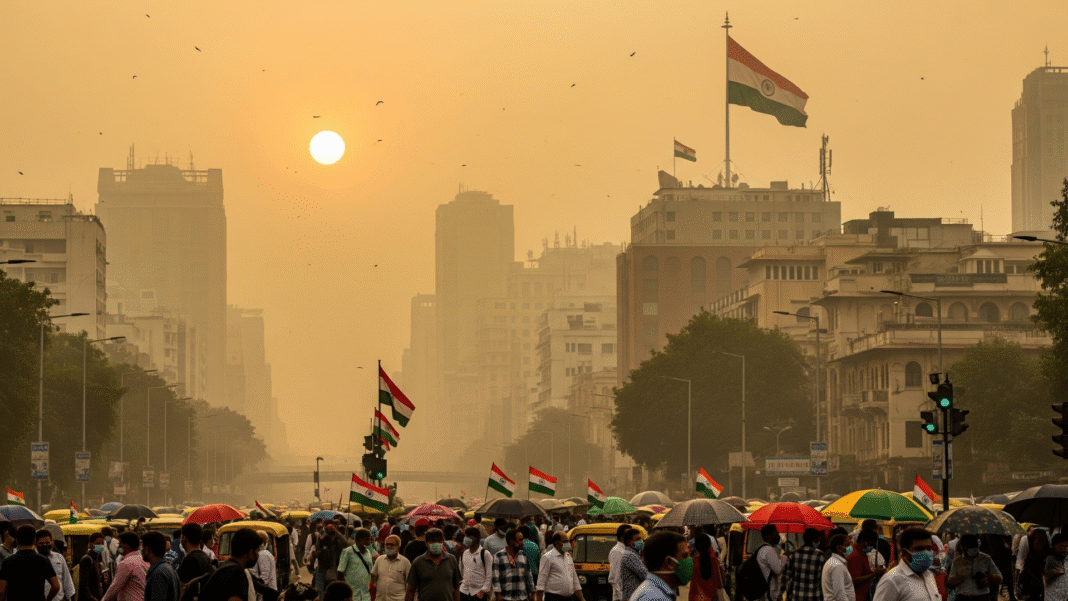India’s environment is making headlines for all the wrong reasons this August. From choking air and shrinking water tables to extreme heatwaves and flooding, millions of Indians are feeling the impact. But what’s causing these issues, who’s most affected, and what can be done? Here’s the comprehensive update for Samast India readers.
Introduction
Climate change and rapid urbanization have brought India to a crossroads: the promise of growth clashes with warnings from nature. This summer, Delhi and Mumbai have seen record pollution and temperatures above 49°C, while states like Rajasthan battle severe drought even as the northeast faces flooding.
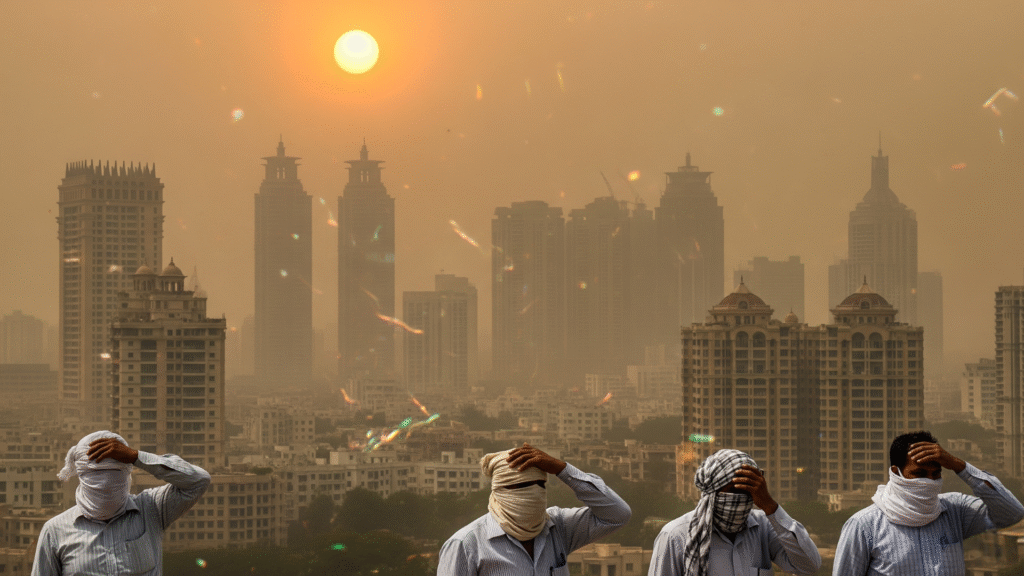
Air Pollution: An Unseen Enemy
- 12 of the world’s 20 most polluted cities are in India—including Delhi, Kanpur, Patna, Ghaziabad, and Lucknow.
- Air pollution isn’t just a winter problem or limited to the north; this year, dangerous air quality has persisted through summer in cities like Agra and Varanasi.
- According to the World Bank, air pollution costs India $95 billion a year in healthcare, lost productivity, and early deaths.
- Children in highly polluted cities may lose up to 9 years of life expectancy compared to the national average.
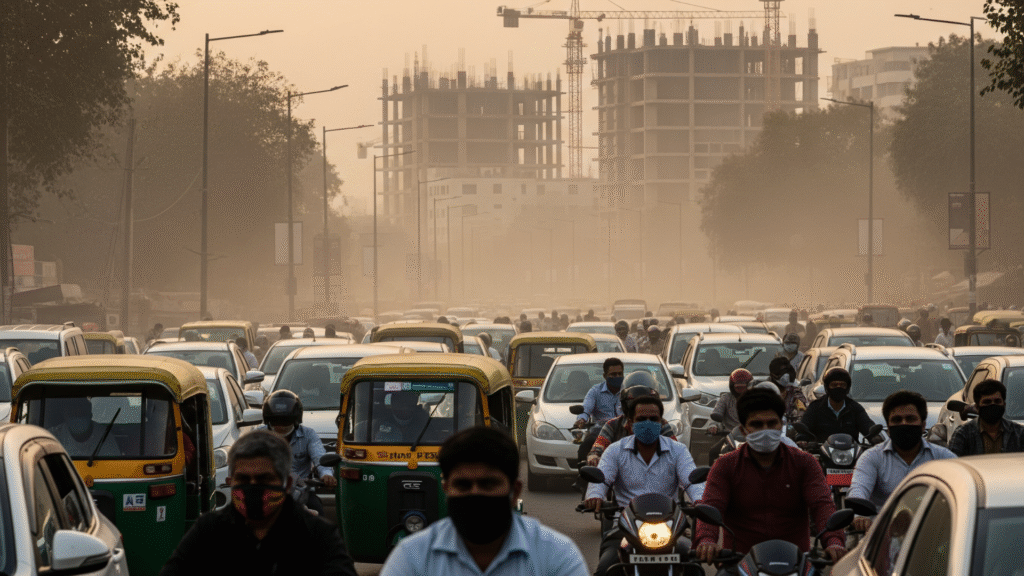
The Water Crisis
- India is among the world’s most water-stressed nations, with 600 million Indians facing high to extreme water stress.
- Major cities such as Bengaluru, Chennai, Delhi, and Hyderabad risk running out of groundwater by 2030, but the crisis is already acute in many places.
- Climate change, urbanization, and pollution worsen shortages. Bengaluru nearly hit “Day Zero” in early 2024—a warning for all.
- Agriculture is hardest hit, but urban water rationing is common in the summer of 2025.
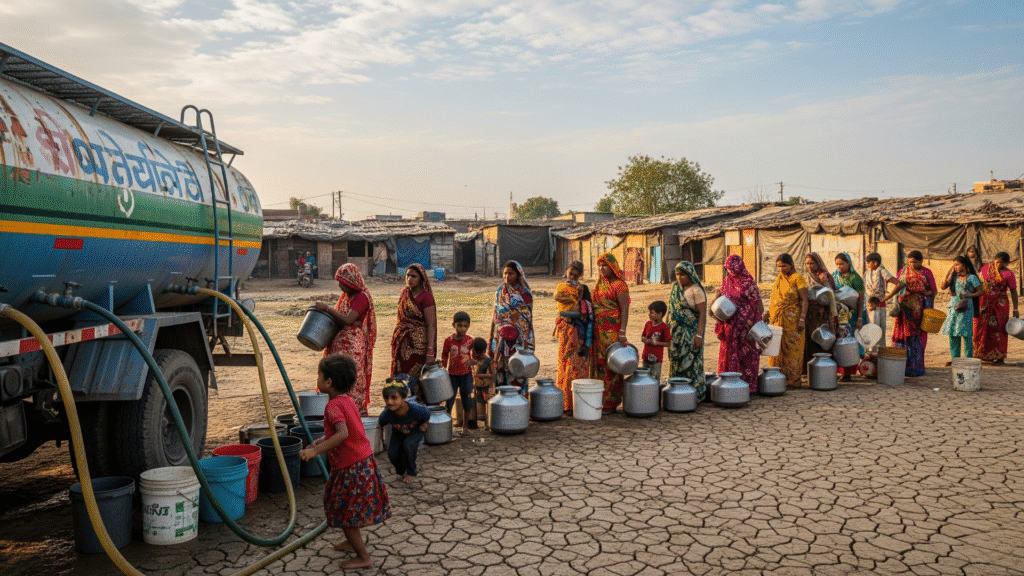
Climate Extremes and Natural Disasters
- This year’s monsoon brought both drought and deluge: Central and northwest India face drought, while the northeast and some coastal metropolises endure flash floods.
- Melting Himalayan glaciers triggered catastrophic floods in Sikkim and Uttarakhand.
- Crop losses, livestock deaths, and displacement are rising, especially among the poor.
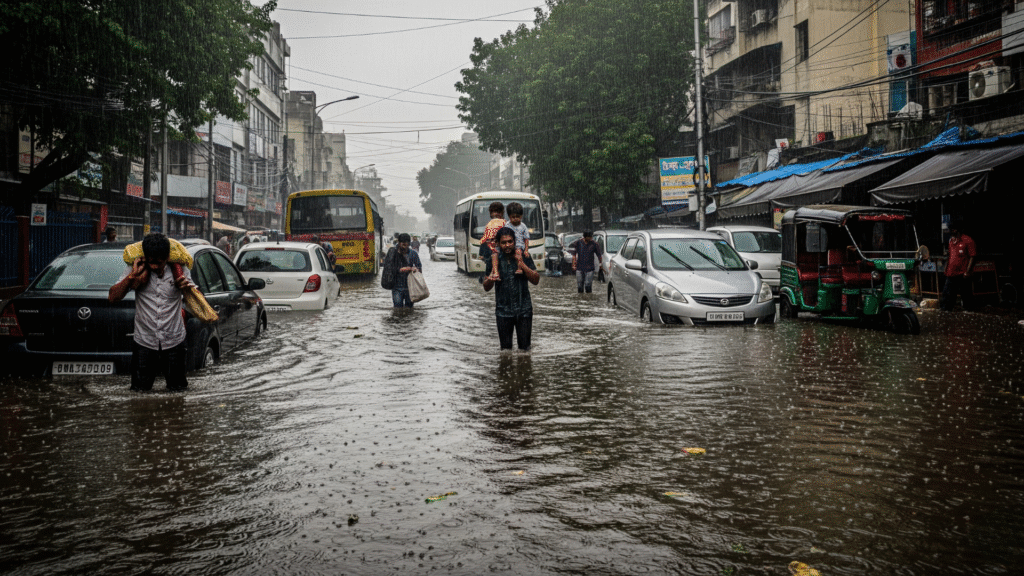
Waste Crisis and Plastic Pollution
- India generates over 62 million tonnes of waste every year, but only 30% is managed correctly—most ends up in landfills, rivers, or is burned.
- Plastic waste is over 3 million tonnes annually, with less than 8% recycled.
- Informal waste workers face severe health hazards in cities like Mumbai, Bengaluru, and Kolkata.
Deforestation and Biodiversity Loss
- Since 2001, India has lost 18% of its forests, mostly in Western Ghats, central India, and the northwest.
- Iconic animals like the Great Indian Bustard and Gangetic dolphin are endangered.
- Only 21% of India’s land remains covered with forest—well below the 33% goal.
What Can Young Indians Do?
- Act Locally: Save water every day, use public transport or carpool, join community clean-ups.
- Speak Up: Support climate action and demand better waste management from local leaders.
- Learn and Share: Spread awareness about recycling, water conservation, and climate adaptation.
- Go Digital: Use apps to track air/water quality and join online campaigns for environmental justice.
Conclusion
India’s environmental emergencies aren’t distant—they’re shaping daily life and our shared future. Whether it’s saving water, planting a tree, or refusing single-use plastics, every small step counts.
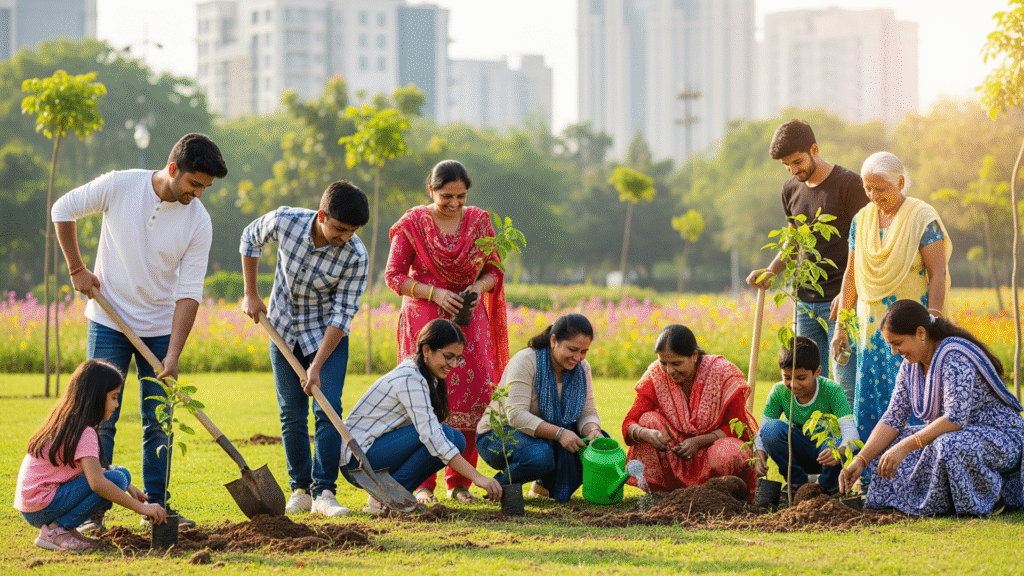
How are you coping with this summer’s environmental challenges? What’s your biggest worry or hope for the future? Comment below and let’s be part of the solution, not the problem!
“A clean, green India isn’t a dream. It’s a responsibility we all share.”
— Samast India Editorial
